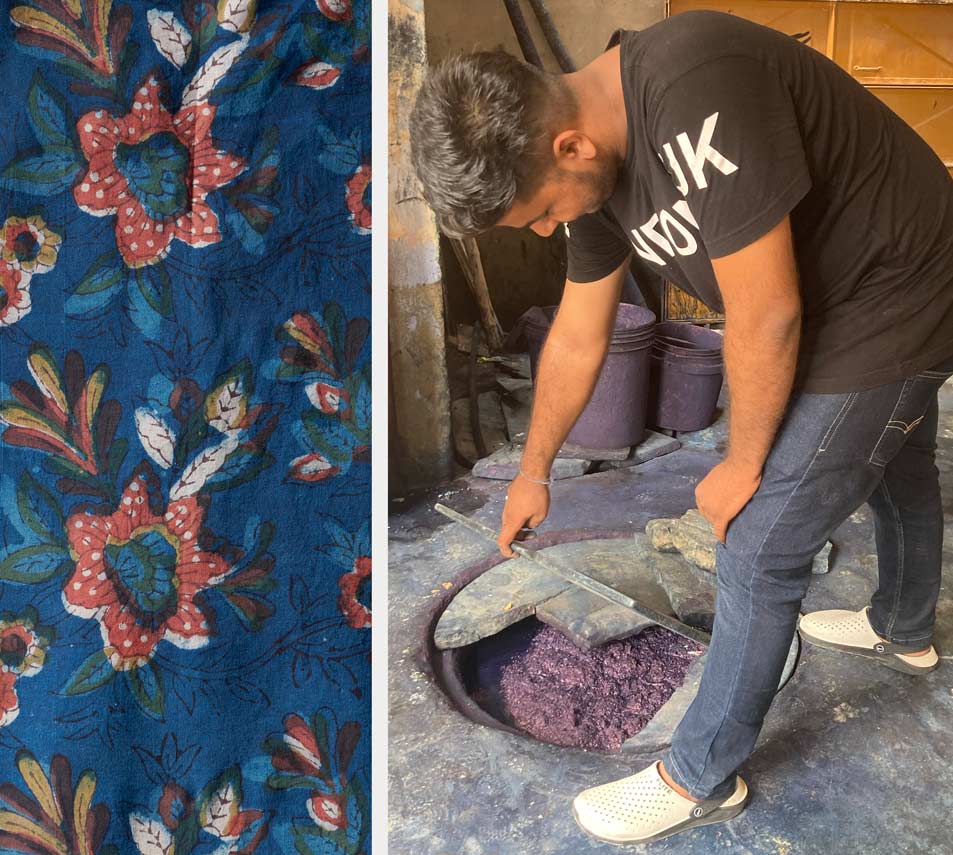From Plant to Fabric: The Journey of Indigo
November 12TH, 2024
Indigo, once a symbol of luxury reserved for royalty and elites, has evolved into a widely used color in fashion and home décor. Historically, garments dyed with this rich blue, sourced from the *Indigofera* plant native to tropical regions such as the Indian subcontinent, were considered rare and highly valuable. With the advent of synthetic indigo, the dye has become much more accessible and is now commonplace in commercial textiles, although our collections continue to embrace traditional, natural indigo dyes.

This collection is more than just its vibrant color—it celebrates the artistry of traditional hand block printing combined with Dabu, a natural mud resist made from ingredients like clay, gum, lime, and wheat flour. This collection features meticulously hand block printed fabrics, with some designs enhanced by intricate hand-filling. Printed on 100% cotton using natural dyes, the process is long and precise.

The fabric is first treated with a mordant to ensure it absorbs the dye. For color, black is created from scrap iron and jaggery, red from alum and alga rang, and mustard from Kashish. Due to the natural origins of these dyes, the colors have a soft, muted tone. After printing, the fabric undergoes multiple washings—first in cold water, then in hot water in a copper pot—before being dried outdoors.

Each piece in this collection is a testament to the skill and craftsmanship behind hand block printing, natural dyes, and the intricate indigo dyeing process. Many people find that wearing indigo clothing is soothing to the skin. These fabrics, created with such precision and artistry, truly capture the timeless allure and value of natural dyes and indigo.

